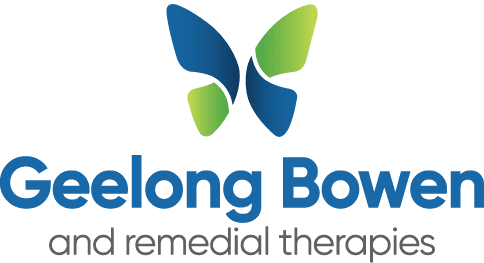As more people come to recognise their ongoing health issues are in fact Long COVID we are being asked this question more and more at the clinic.
The careful answer is most probably, yes!
In Australia, it is estimated that 20% of people who have had COVID-19 still have symptoms after 1 month. 5% – 12% still suffer after 3 months. Those who are over 35 years of age, female, have some pre-existing conditions such as diabetes or had a severe illness during their COVID-19 infection at more at risk.In conjunction with allied health and medical interventions, Hyperbaric Oxygen Therapy (HBOT) is showing promise as an adjunctive therapy assisting people suffering long COVID symptoms.
Hyperbaric Oxygen Therapy (HBOT) is “an intervention where an individual breathes near 100% oxygen intermittently while inside a hyperbaric chamber that is pressurized to greater than sea level pressure (1 atmosphere absolute, or ATA)” (1)The science hypothesises that HBOT reduces oxidative stress, a condition of lowered antioxidants causing more free radicals. Which can cause damage to organs such as the heart, lungs, kidney, and pancreas often leading to high blood pressure, diabetes, and kidney disease (2).HBOT also reduces chronic inflammation in the brain, it is this inflammation that causes brain fog and memory issues associated with long COVID (3).A COVID infection may also cause the lining of the small arteries in the body to stiffen and not dilate as they should. Essentially causing a form of cardiac disease called endothelial dysfunction.By assisting in these problems HBOT can thereby alleviates symptoms associated with long COVID (4).
Studies recently published show very promising results with hyperbaric oxygen therapy. Assisting people to recover health-related quality of life (HRQoL) after suffering long COVID (4), (5). These studies are usually conducted using a higher pressure than is typically used in mHBOT. However, the premise remains the same. Introducing to the body a higher saturation of oxygen delivered at a higher pressure floods the body with more circulating oxygen available to the body’s tissues.Using mHBOT may then induce the physiological changes required to alleviate the debilitating but common symptoms of long COVID. Such as loss of smell or taste, headache, wide spreads pain, and fatigue. Brain fog, low energy, and a propensity to continually contract ongoing respiratory illnesses with continual breathlessness (6).In a study conducted the UK in 2021, long COVID patients were given 10 HBOT sessions over 12 days for 1hr 45mins duration. The primary outcomes of interest were fatigue and brain fog. At the completion, the results were substantially positive. This matched with what the participants told the researchers with many reporting their lives had been transformed (1).“Results indicate that HBOT can induce neuroplasticity and improve cognitive, fatigue, sleep and pain symptoms of patients suffering from post-COVID-19. HBOT’s beneficial effect may be attributed to increased brain perfusion of oxygen and neuroplasticity in regions associated with cognitive and emotional roles” (3)So, can mHBOT help you with your long COVID symptoms?
It may indeed and it is definitely not going to hurt!!
Find out more about mHBOT hereListen to a recent interview where Chris Reed our Senior Myotherapist and Bowen Therapist talks with Loretta on PulseFM Geelong and The Happy Chicks Podcast about “Living with Long Covid.(HBOT usually is administered using 100% oxygen at pressures above 1.4 ATA, mHBOT is administered using an oxygen concentrator delivering 90-95% oxygen at a pressure of 1.34 ATA)
- Robbins, T., Gonevski, M., Clark, C., Baitule, S., Sharma, K., Magar, A., Patel, K., Sankar, S., Kyrou, I., Ali, A., & Randeva, H. S. (2021). Hyperbaric oxygen therapy for the treatment of long COVID: early evaluation of a highly promising intervention. Clinical medicine (London, England), 21(6), e629–e632. https://doi.org/10.7861/clinmed.2021-0462
- Ogura, S., Shimosawa, T. Oxidative Stress and Organ Damages. Curr Hypertens Rep 16, 452 (2014). https://doi.org/10.1007/s11906-014-0452-x
- Frere, J. J., Serafini, R. A., Pryce, K. D., Zazhytska, M., Oishi, K., Golynker, I., Panis, M., Zimering, J., Horiuchi, S., Hoagland, D. A., Møller, R., Ruiz, A., Kodra, A., Overdevest, J. B., Canoll, P. D., Borczuk, A. C., Chandar, V., Bram, Y., Schwartz, R., tenOever, B. R. (2022). SARS-COV-2 infection in hamsters and humans results in lasting and unique systemic perturbations after recovery. Science Translational Medicine, 14(664). https://doi.org/10.1126/scitranslmed.abq3059
- Kjellberg A, Abdel-Halim L, Hassler A, et al Hyperbaric oxygen for treatment of long COVID-19 syndrome (HOT-LoCO): protocol for a randomised, placebo-controlled, double-blind, phase II clinical trial BMJ Open 2022;12: e061870. doi: 10.1136/bmjopen-2022-061870
- Zilberman-Itskovich, S., Catalogna, M., Sasson, E. et al. Hyperbaric oxygen therapy improves neurocognitive functions and symptoms of post-COVID condition: randomized controlled trial. Sci Rep 12, 11252 (2022). https://doi.org/10.1038/s41598-022-15565-0
- Augustin M, Schommers P, Stecher M, Dewald F, Gieselmann L, Gruell H, et al. Post-COVID syndrome in non-hospitalised patients with COVID-19: a longitudinal prospective cohort study. Lancet Reg Heal – Eur. 2021;6:1–8.





